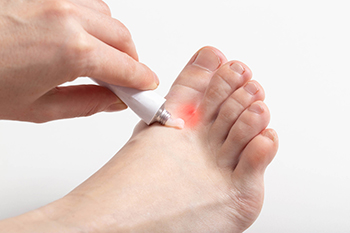
Athlete's foot, or tinea pedis, is a prevalent fungal infection that primarily affects the feet. It is essential to understand the causes behind this bothersome condition for effective prevention and treatment. One leading cause is the fungus trichophyton, which thrives in warm, damp environments. Walking barefoot in public areas, such as locker rooms, swimming pools, and communal showers, can expose you to this fungus. Sharing towels, shoes, or socks with an infected person can also facilitate its spread. Sweaty feet create an ideal environment for fungal growth, making individuals with hyperhidrosis more susceptible. Wearing tight, non-breathable shoes can exacerbate the issue, trapping moisture and promoting fungal development. Certain underlying medical conditions, including weakened immunity or diabetes, can also increase the risk of athlete's foot. Preventing athlete's foot involves maintaining good foot hygiene, keeping feet dry, and choosing breathable footwear. If you suspect you have athlete's foot, it is suggested that you consult a podiatrist for a proper diagnosis and tailored treatment options that can effectively manage this condition.
Athlete’s foot is an inconvenient condition that can be easily reduced with the proper treatment. If you have any concerns about your feet and ankles, contact Gerald Erskine, DPM from Seneca Family Footcare. Our doctor will treat your foot and ankle needs.
Athlete’s Foot: The Sole Story
Athlete's foot, also known as tinea pedis, can be an extremely contagious foot infection. It is commonly contracted in public changing areas and bathrooms, dormitory style living quarters, around locker rooms and public swimming pools, or anywhere your feet often come into contact with other people.
Solutions to Combat Athlete’s Foot
- Hydrate your feet by using lotion
- Exfoliate
- Buff off nails
- Use of anti-fungal products
- Examine your feet and visit your doctor if any suspicious blisters or cuts develop
Athlete’s foot can cause many irritating symptoms such as dry and flaking skin, itching, and redness. Some more severe symptoms can include bleeding and cracked skin, intense itching and burning, and even pain when walking. In the worst cases, Athlete’s foot can cause blistering as well. Speak to your podiatrist for a better understanding of the different causes of Athlete’s foot, as well as help in determining which treatment options are best for you.
If you have any questions please feel free to contact our office located in Ronceverte, WV . We offer the newest diagnostic and treatment technologies for all your foot and ankle needs.
